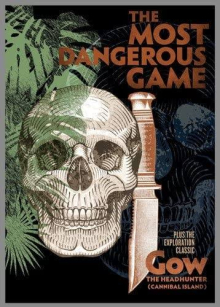Gow the Headhunter
Gow the Headhunter is a silent adventure film released in 1928, directed by Edward A. Salisbury. The film is notable for its documentary-style footage, which Salisbury claimed to have shot during his expeditions to the South Seas islands. However, the authenticity of these claims and the footage has been a subject of debate among historians and film scholars. "Gow the Headhunter" is considered an early example of ethnographic film, blending staged scenes with genuine footage of indigenous peoples and practices.
Plot[edit | edit source]
The film does not follow a traditional narrative structure but instead presents a series of vignettes purportedly showcasing the life and customs of South Seas islanders, including headhunting practices. The film's portrayal of these practices and its depiction of the indigenous peoples have been criticized for perpetuating stereotypes and sensationalizing cultural rituals for entertainment purposes.
Production[edit | edit source]
Edward A. Salisbury, an explorer and filmmaker, led an expedition to the South Seas with the dual purpose of adventure and capturing footage that could be used to create a compelling film. Salisbury's team included cameramen and other personnel who helped document their encounters and experiences on the islands. The film's production was marked by the challenges of shooting in remote locations with the technology available at the time.
Reception[edit | edit source]
Upon its release, "Gow the Headhunter" garnered attention for its exotic subject matter and the purported authenticity of its footage. However, its reception was mixed, with some viewers fascinated by the glimpse into distant cultures, while others were critical of the film's ethical implications and the accuracy of its representations. The film has since been studied as an artifact of early cinema's fascination with the "other" and as a precursor to more rigorous ethnographic filmmaking.
Legacy[edit | edit source]
"Gow the Headhunter" occupies a controversial place in film history. It is studied for its ethnographic ambitions and as an example of the early 20th century's approach to depicting non-Western cultures in media. The film also raises important questions about the ethics of documentary filmmaking, the responsibilities of filmmakers to their subjects, and the line between representation and exploitation.
Search WikiMD
Ad.Tired of being Overweight? Try W8MD's physician weight loss program.
Semaglutide (Ozempic / Wegovy and Tirzepatide (Mounjaro / Zepbound) available.
Advertise on WikiMD
|
WikiMD's Wellness Encyclopedia |
| Let Food Be Thy Medicine Medicine Thy Food - Hippocrates |
Translate this page: - East Asian
中文,
日本,
한국어,
South Asian
हिन्दी,
தமிழ்,
తెలుగు,
Urdu,
ಕನ್ನಡ,
Southeast Asian
Indonesian,
Vietnamese,
Thai,
မြန်မာဘာသာ,
বাংলা
European
español,
Deutsch,
français,
Greek,
português do Brasil,
polski,
română,
русский,
Nederlands,
norsk,
svenska,
suomi,
Italian
Middle Eastern & African
عربى,
Turkish,
Persian,
Hebrew,
Afrikaans,
isiZulu,
Kiswahili,
Other
Bulgarian,
Hungarian,
Czech,
Swedish,
മലയാളം,
मराठी,
ਪੰਜਾਬੀ,
ગુજરાતી,
Portuguese,
Ukrainian
Medical Disclaimer: WikiMD is not a substitute for professional medical advice. The information on WikiMD is provided as an information resource only, may be incorrect, outdated or misleading, and is not to be used or relied on for any diagnostic or treatment purposes. Please consult your health care provider before making any healthcare decisions or for guidance about a specific medical condition. WikiMD expressly disclaims responsibility, and shall have no liability, for any damages, loss, injury, or liability whatsoever suffered as a result of your reliance on the information contained in this site. By visiting this site you agree to the foregoing terms and conditions, which may from time to time be changed or supplemented by WikiMD. If you do not agree to the foregoing terms and conditions, you should not enter or use this site. See full disclaimer.
Credits:Most images are courtesy of Wikimedia commons, and templates Wikipedia, licensed under CC BY SA or similar.
Contributors: Prab R. Tumpati, MD

